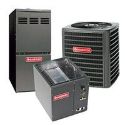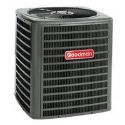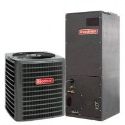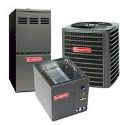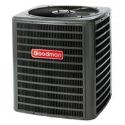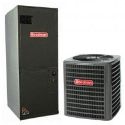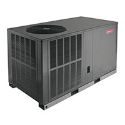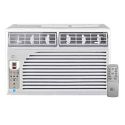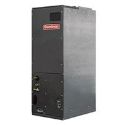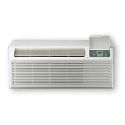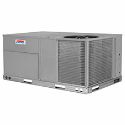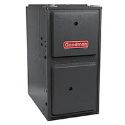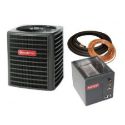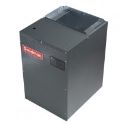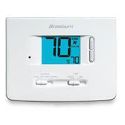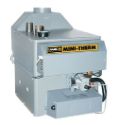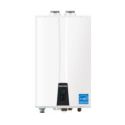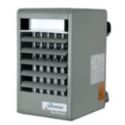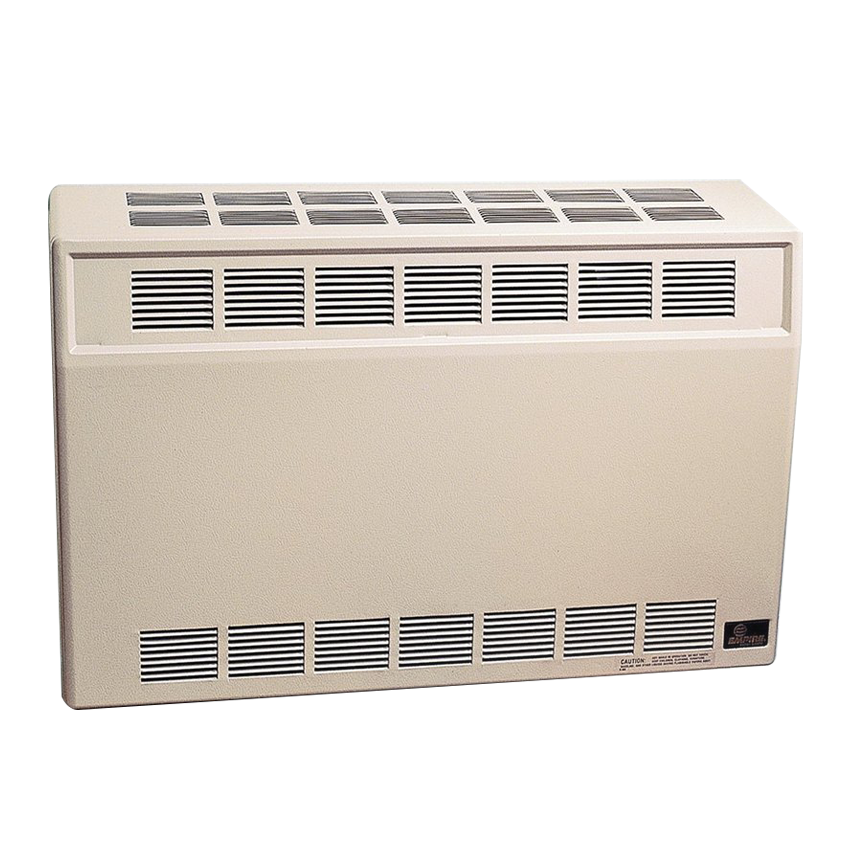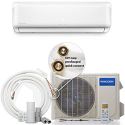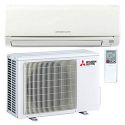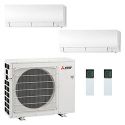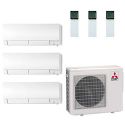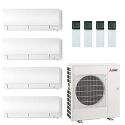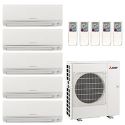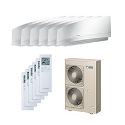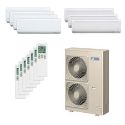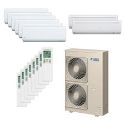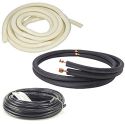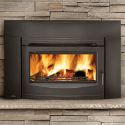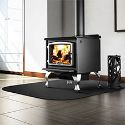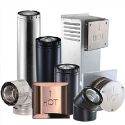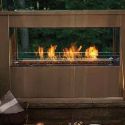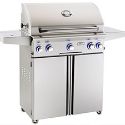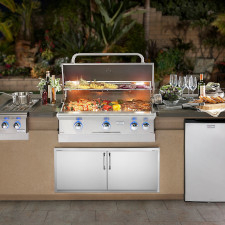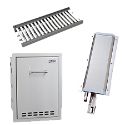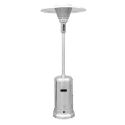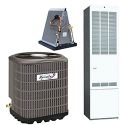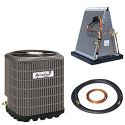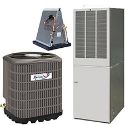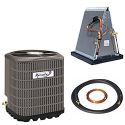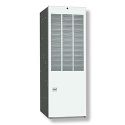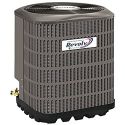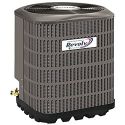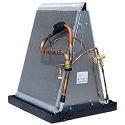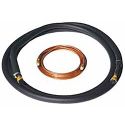So, you are new to Mini splits, and you are excited… but also confused. I hope reading this will help straighten out a few things.
What are Mini Splits Used For?
Many homes will use a Mini split for a section of the home that does not have central HVAC attached to it. This could be an addition that was added on after the central system was installed or maybe a porch area or separate building that could not have ducting connected to it. As Mini splits grow in popularity more homes have started using them to heat and cool the entire home.

There are other uses that are a little more unconventional. People will install them on boats, mobile homes, RV’s and even shipping containers.
What Kinds of Mini Splits are There?
Mini splits can come and quite a few different shapes and sizes. First you should know that there are two main parts to the Mini split, the air handler which will go inside, and the condenser which would sit outside. Here is a list of the different types of air handlers
- Wall Mounted
- Floor Mounted
- Ceiling Cassette
- Concealed Duct
- Ceiling Suspended
- Multi-positional

The outdoor condenser has three main types, the cooling only version, the heat pump version, and a super heat version (hyper heat, hypertek, extra low temp) to name a few. The “super heat” versions are designed to work in outdoor temperatures as low as 15 below 0!
As for sizes, there are a plethora. They range all the way from 6000 Btu to 48000 Btu.
What Size Do I Need?
To accurately determine what size is best for your’ area, you will need to know the square footage of the room. This also means that you would need the square footage of each rooms you want to condition if you are using Mini splits for the whole house. Your location should also be taken into consideration, for example if you are in Texas it would need different sizing than if you were in Tennessee.
An online calculator like this one can help you determine the amount of Btu you would need for your space, but don’t forget that a heat pump mini split will use both heating and cooling Btu (12000 Btu per ton of cooling).
Can I Install It Myself?
It is possible to get a Mini split system that you can install yourself, but it will need to be a DIY System. Currently DIY systems are only available in single zone applications. It is not recommended to install a system that does not have a pre-charged line set since you will need special tools to get that set up as opposed to two wrenches that you would need for a DIY system.
The up-front cost of buying a Mini split system and having it installed may be intimidating but you will thank yourself down the road once you see how much it saves on energy.
How to get Started
Here is an example of how to set up a Mini split system. Different air handlers will be used for this project so I will explain on the way.
You have a house in Ohio that is 2000 square feet. It has the following
- 3 bedrooms (150,150,200) square feet
- 2 bathrooms (50,50) square feet
- laundry room (50) square feet
- living room (500) square feet
- kitchen (300) square feet
- garage (650) square feet
Ohio is a little cold so the emphasis on heat would be greater than if sizing this for Texas. For a house this size you would not be able to put it all on one condenser, we will be putting I on three 36,000 Btu condenser (MXZ-4C36NA2-U1).
The Layout
For the first 150 square foot bedroom we would put a 9000 Btu ceiling cassette (SLZ-KA09NAR1). The ceiling cassette models are good at dispersing the air in all directions from where it is at on the ceiling. It also comes with a condensate pump already installed for easy condensate removal. And lastly they have the option of adding a 6” pipe to draw in fresh air if you so desired. Ceiling cassette units will need to have their own wall thermostat to operate (MHK1).
For the second 150 square foot bedroom the ceiling supports are too close together and the walls are full of windows, so we cannot use wall mounted or ceiling cassette. That leaves us with a 9000 Btu floor mounted unit (MFZ-KJ09NA) which is basically a wall mounted unit but just closer to the floor instead of the ceiling (it does not actually sit on the floor). Floor mounted and wall mounted units usually come with a remote control to set the temperatures and modes.

The 200 square foot bedroom gets cold easily so we will be putting a 12000 Btu ceiling cassette (SLZ-KA12NAR1.TH) in there to keep it warm.
For the two bathrooms and the laundry room we will use a 9000 Btu concealed duct unit (SEZ-KD09NA4R1.TH). The concealed duct units are great when you have small areas that you would like to condition since you can split one air handler into multiple areas. They are a little harder to install but can give you a concealed look with the vent openings. The concealed duct unit will also need its own wall thermostat since it is hidden (MHK1).
For the living room a 24000 Btu wall mounted air handler (MSZ-GL24NA-U1) would do the trick. Also, for the garage we would use the 24000 Btu wall mounted air handler.
The last space we need to cover is the kitchen, where we will use an 18000 Btu wall mounted air handler (MSZ-FH18NA2) that can sense human presence as well as split the air flow in two directions in order to accommodate kitchen activities.
Necessary Connections
The beauty of these systems is their simplicity: simply connect power to the condenser and run a control wire from the condenser to each air handler. You will also need to run a refrigerant line set from each air handler to the condenser and a connect a drain line to remove condensation (a condensate pump may be needed for inclined draining). Each air handler will have a specific size connection which may need an adapter piece to fit the condensers connection port
Conclusion
Mini splits are a versatile option for your home’s HVAC. You will not need any ductwork, but it also zones your house the way you want. So you keep each area the temperature at the desired amount. We hope the theoretical setup above should help you better understand the uses of the different types so that you can apply it to your own project.
Just to go over the main points
- Mini splits are great for all sorts of homes
- Mini splits have many flexible options
- Find out if you need a professional or if you can do it yourself
- Make sure you get all the hook up parts you will need.
- If you need help, ask a professional like us (1-800-397-1392) at hvacdirect.com
 Shopping Cart
Shopping Cart


